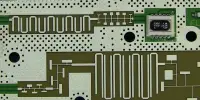An electromagnet is a type of magnet whose magnetic field is generated by an electric current. Unlike permanent magnets, which produce a constant magnetic field, an electromagnet’s strength may be adjusted by varying the amount of electric current running through it. Typically, these are made up of wire twisted into coils. A current flowing through the wire generates a magnetic field, which is concentrated in the coil’s central hole.
When the current is shut off, the magnetic field is no longer present. The wire turns are frequently twisted around a magnetic core formed of a ferromagnetic or ferrimagnetic material such as iron, which concentrates the magnetic flux and creates a more powerful magnet.
Here’s how an electromagnet works:
• Coil of Wire: An electromagnet typically consists of a coil of wire, often wrapped around a soft iron core. The wire is usually made of copper or aluminum.
• Electric Current: When an electric current flows through the wire coil, it generates a magnetic field around the coil. The direction of the magnetic field depends on the direction of the current flow.
• Soft Iron Core: The soft iron core inside the coil enhances the magnetic field. Soft iron is used because it easily magnetizes and demagnetizes, which makes the electromagnet more efficient.
• Strength Control: The amount of electric current flowing through an electromagnet’s coil can be varied to regulate the strength of the magnetic field it produces. Increased current strengthens the magnetic field, while decreased current reduces it.
Applications
Electromagnets are widely employed in a variety of electrical devices, including motors, generators, electromechanical solenoids, relays, loudspeakers, hard disks, MRI machines, scientific instruments, and magnetic separation equipment. These are also used in industry to lift and transport big iron things like scrap iron and steel.
• Industrial Applications: Electromagnets are widely used in various industries for lifting heavy metal objects, such as scrap metal in recycling facilities or steel plates in manufacturing plants.
• Medical Imaging: In Magnetic Resonance Imaging (MRI) machines, powerful electromagnets are used to produce detailed images of the inside of the human body.
• Electric Motors and Generators: Electromagnets are essential components in electric motors and generators, where they convert electrical energy into mechanical energy and vice versa.
• Speakers and Microphones: Electromagnets are used in speakers to convert electrical signals into sound waves and in microphones to convert sound waves into electrical signals.
• Telecommunications: Electromagnets are used in relays and switches in telecommunication systems to control the flow of electrical signals.
Advantages
The primary advantage of an electromagnet over a permanent magnet is the ability to swiftly adjust the magnetic field by varying the amount of electric current in the winding. However, unlike a permanent magnet, which requires no power, an electromagnet requires a constant source of current to sustain its magnetic field.
















